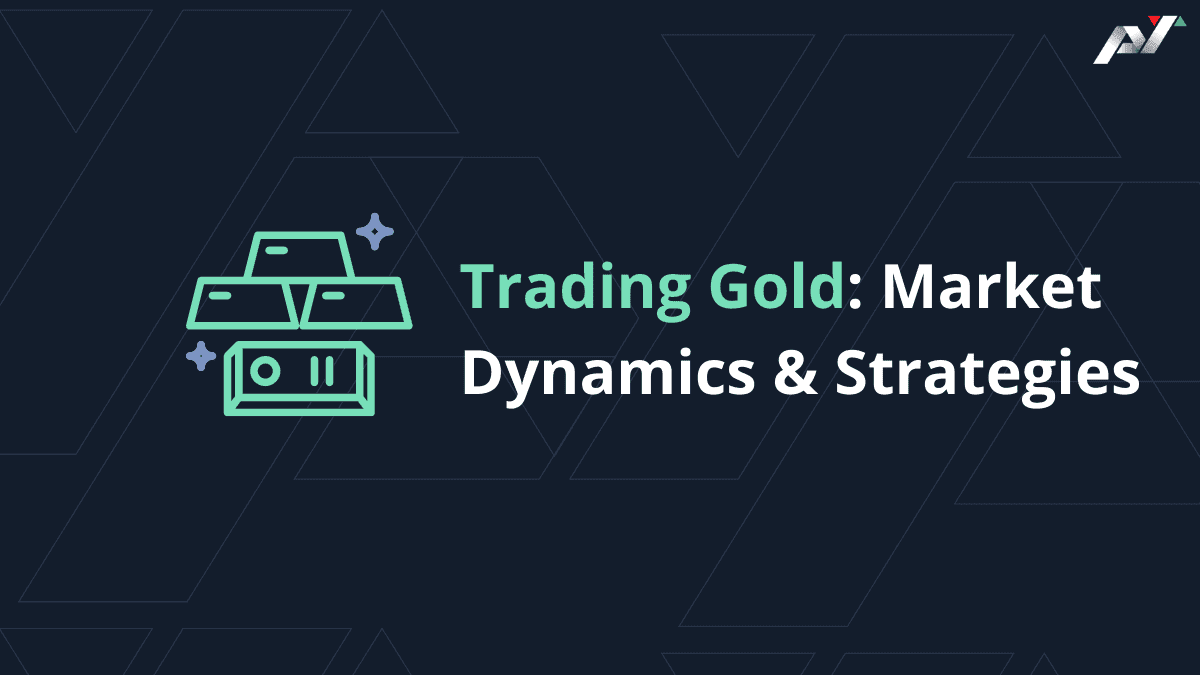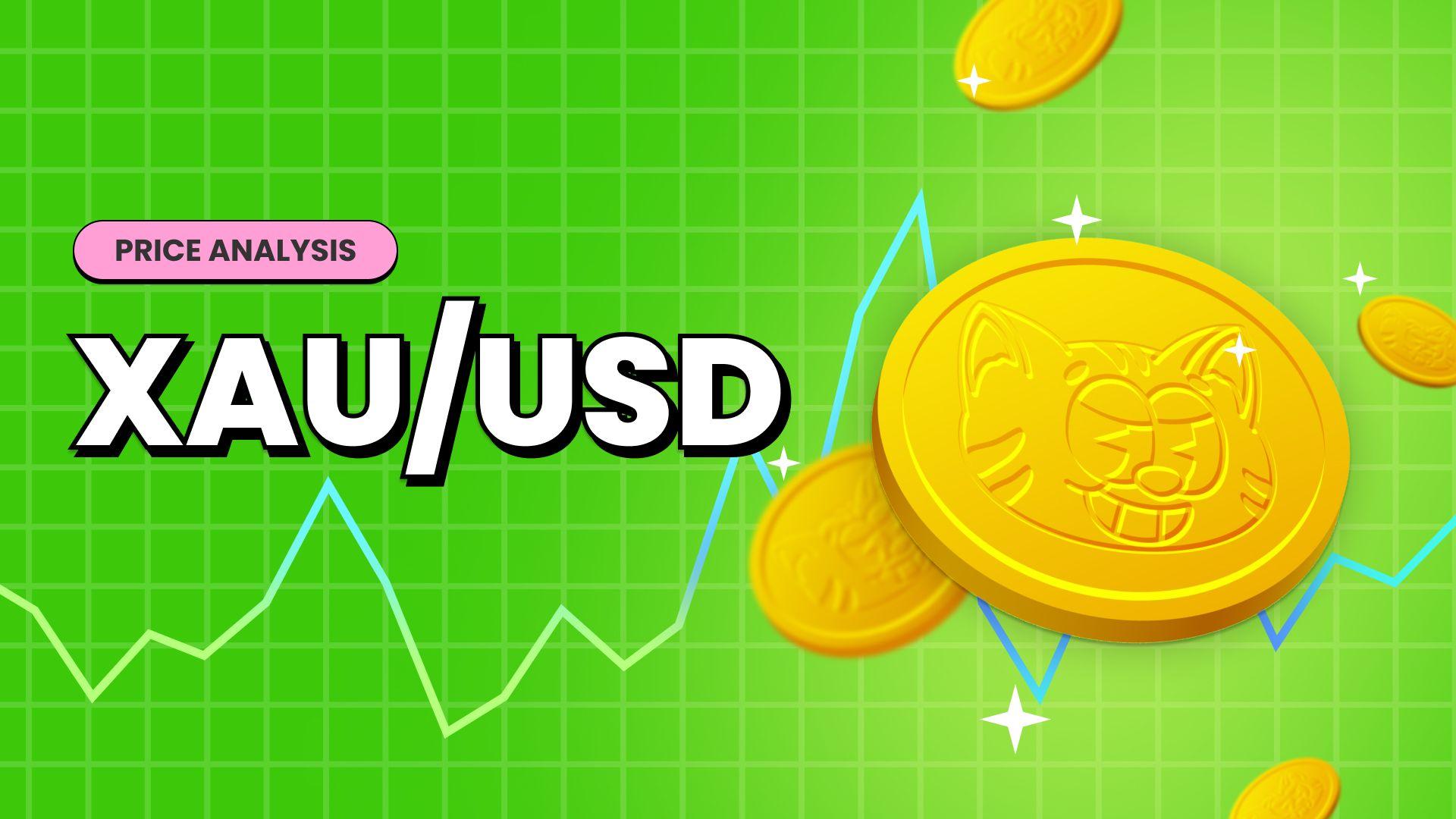Trading Gold: Market Dynamics and Trading Strategies






The gold market offers many trading opportunities and high liquidity in both bull and bear markets, in nearly all environments. Traded on public exchanges, the value of gold fluctuates as determined by market conditions as demand and supply conditions pull the price in different directions. While it doesn’t share the same practical utility as other commodities like wheat or oil, investors are attracted to gold because of its unique interplay with the global economy and political systems.
Besides the retail jewellery market, the reason why people buy and sell gold can vary greatly from commercial applications, as a safe haven to hedge against inflation or market volatility, or pure speculation. For day traders in the gold market, the purpose is simply to make profits from daily gold price movements.
But capturing those profitable trading opportunities requires an understanding of the unique characteristics of the global gold trading market. There are many hidden pitfalls that can quickly wipe out gains secured steadily over a longer period, plus there are multiple types of investment vehicles that each produce different results for different trading strategies – even experimental crypto gold that can be redeemed for actual gold. So let’s dig in to the various factors unique to this commodity to understand the intricacies of the global gold trading market.
What moves the price of gold?
As one of the oldest currencies used by people for trading goods and services, gold has entrenched itself deep into the psyche of global finance. Nearly every trader will have an opinion the precious metal, but the price of gold really only has a few price catalysts that truly move the needle: inflation and deflation; greed and fear; supply and demand. The difficult thing about trading gold is that even the most experienced traders can misinterpret recent price movements as a result from one of these factors, while it is in fact another one affecting the price action.
For example, say a global selloff unfolds and gold sees a strong rally, many traders might assume fear is moving the price of gold upwards and they join in as they think the crowd will keep piling into gold as a safe haven. However, it could be that the real price catalyst was in fact inflation, which would attract a much more technical traders that sell against the gold rally aggressively and take profits.
There is always a different combination of these price catalysts at play that determines the long-term price trends for gold in world markets. Taking the Global Financial Crisis of 2008 as an example, the economic stimulus that came from the Federal Reserve had little effect on gold prices at first because traders were more focused on high fear levels as the economic collapse unfolded. The quantitative easing did however encourage deflation, which triggered a major reversal in gold markets as well as other commodities markets.
To make things more complicated, gold trading attracts massive hedging activities by financial institutions that buy and sell in combination with forex and bonds in strategies knows as “risk-on” and “risk-off”. Funds create baskets of instruments matching growth (risk-on) and safety (risk-off), trading these combinations through incredibly fast-moving algorithms.
Lastly, organisations that affect the price of gold the most include:
- WGC (World Gold Council), the market development organisation for the gold industry.
- LBMA, London Bullion Market Association, whose members conduct trading in this wholesale over-the-counter market for the trading of gold and silver. It is loosely overseen by the Bank of England.
- COMEX (Commodity Exchange Inc.), the primary market for trading metals.
- Zurich Gold Pool founded in 1968 by the largest banks in Switzerland after the collapse of the London Gold Pool.
- CGSE, the Chinese Gold & Silver Exchange Society is an organisation of gold trading firms in Hong Kong who are participants of the Chinese Gold and Silver Exchange.
How to trade gold
When trading gold, physical gold is not actually taken possession of. Instead, traders place buy and sell orders and profits or losses are reflected in the trading account when those positions are closed. There are different ways to trade gold, such as futures, ETFs, and through instruments like CFDs.
In the Forex market, gold is considered as a form of currency. The internationally accepted code for gold is XAU which denotes one troy ounce of gold, and a currency pair like XAU/USD tells you how many US Dollar (the quote currency) are needed to purchase one Gold Ounce (the base currency). Pocket Trader offers both XAU/USD and XAU/EUR available for trading, plus XAG/USD which is the currency pair for trading silver.
Gold is a nearly 24-hour market, but peak liquidity is typically found during New York trading hours. Trades during peak activity offer high liquidity and low volatility, making them good targets for safe-haven positions, while off-hours trading can provide the extra volatility needed to execute scalping strategies.
Because XAU/USD tends to trade in a range, one of the easiest strategies is to identify buy or sell opportunities within previous highs and lows for the trading pair. Traders can open a position on gold when it’s trending up, for example, and target a previous high as their sell price, or vice versa.
Trading gold actively will usually involve a lot of in-depth technical analysis. For example, many gold traders look for different moving averages to cross over, buying whenever a shorter-term moving average crosses a longer-term moving average. Under the same strategy, a short-term moving average dipping below a longer-term moving average generates a sell signal in anticipation of further price pull back.
The symmetrical triangle is another chart pattern that traders use often. As the consolidation of the trend lines takes place, the tighter price movement creates the potential trading opportunity on a breakout. Most traders use the symmetrical triangle pattern along with other technical indicators, such as liquidity or the relative strength index (RSI).
Learning how to apply technical indicators to spot profitable opportunities is a skill that takes time to acquire. Join the Pocket Trader community to learn from the best traders in the business, discuss ideas about the gold market, or any of the other markets available on the trading platform such as silver, major and minor forex currency pairs, and indices such as US TECH and more.


